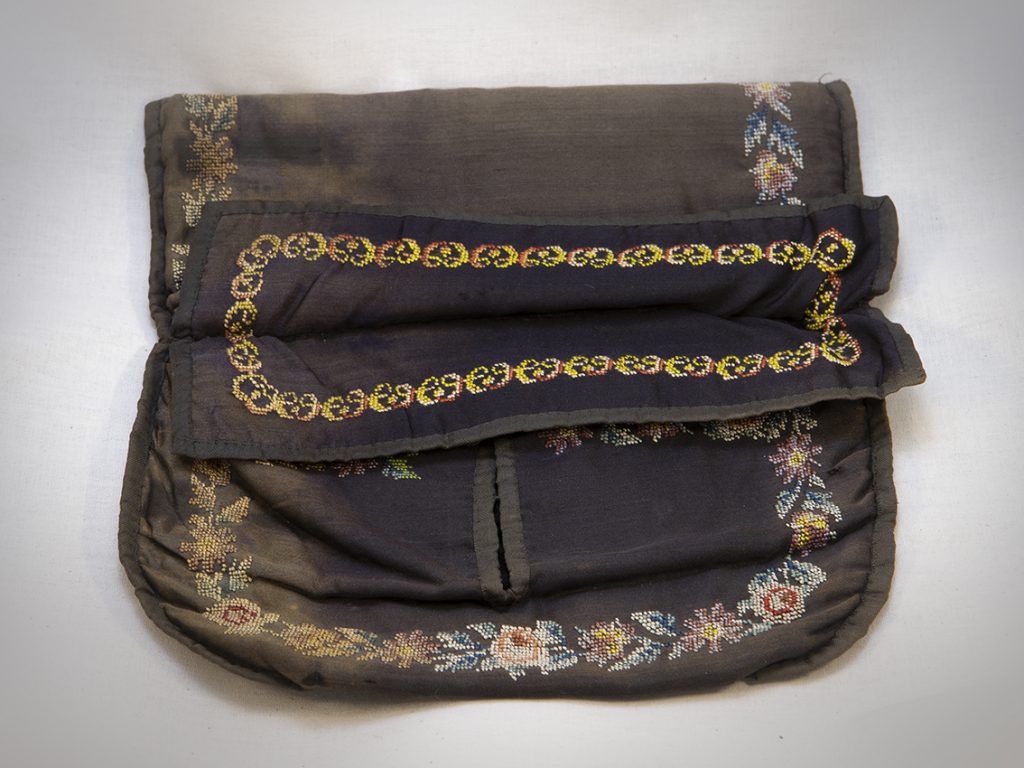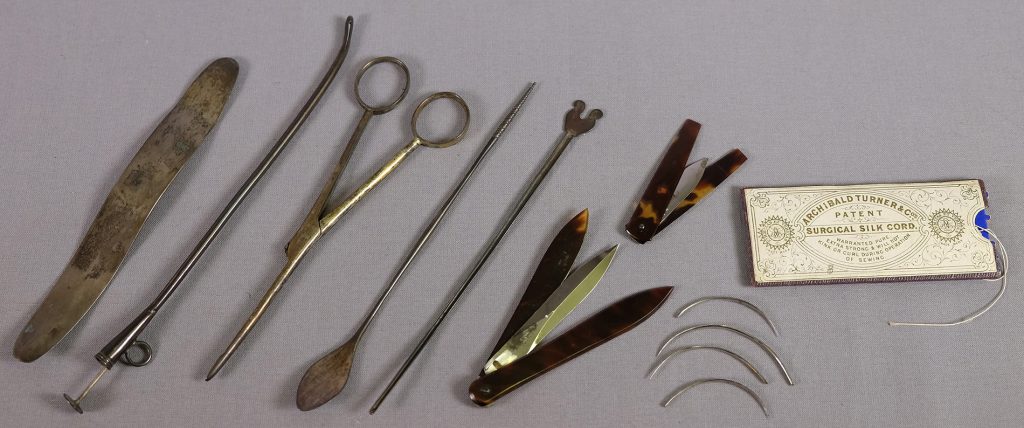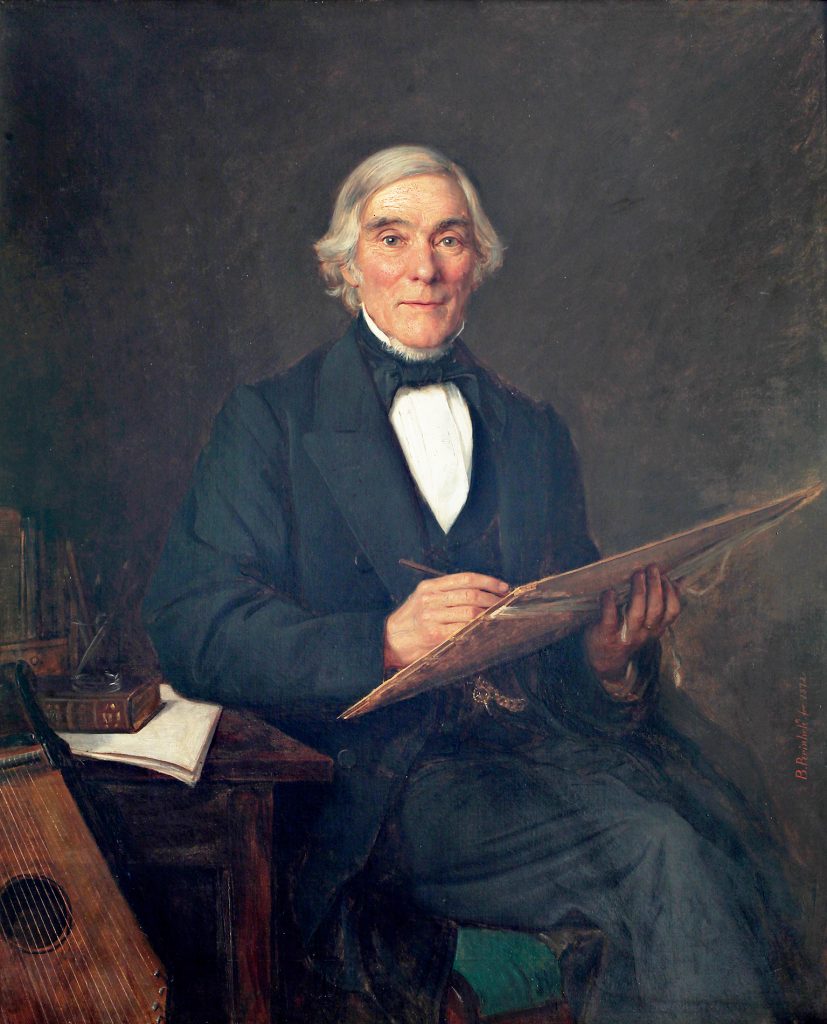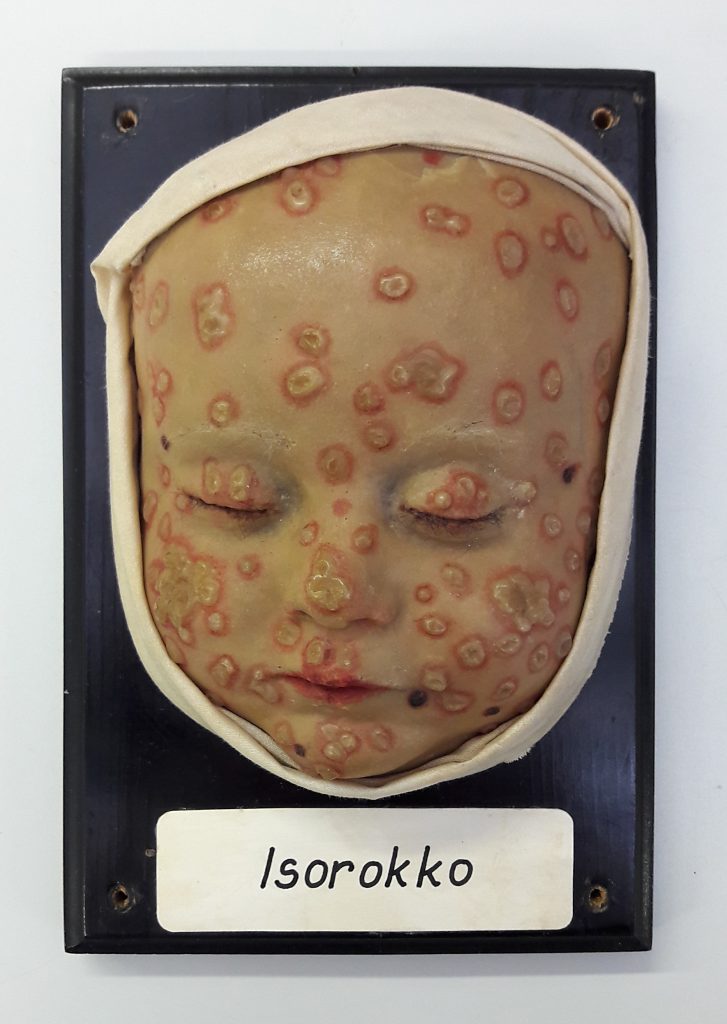An older gentleman slightly turned to the left looks sombrely out of a painting. A high-collared, white shirt is peeking out from under the black coat. The medal of the Order of Saint Anna hanging on a red ribbon around his neck and the Cross of the Order of Saint Vladimir on his chest speak of the appreciation of the Emperor. His grey hair is combed back. The man immortalised on the canvas is Johan Agapetus Törngren (1772–1859). The Object of the Month is an instrument purse that used to belong to him.

From the army to medical profession
Törngren’s origins were humble. His parents were Sergeant Johan Jacob Törgren from the Nyland Infantry Regiment and Beata Kristina Malin, housekeeper at Kiiala Manor. Törngren was a student at Borgå Gymnasium in Porvoo when the war between Sweden and Russia broke out in 1788. Törngren was recruited into Gustav III’s army as an assistant to the Chief Surgeon Johannes Theophilus Nathorst, and as a result of the good instruction received from him, Törngren advanced to the position of assistant physician at a military hospital in Porvoo. After the war Törngren continued his career as a barber surgeon but also managed to complete his upper secondary education, which had been cut short by the war. A Haartman scholarship, 600 copper dalers a year, opened the doors to academic studies in Stockholm. The studies were followed by conferral as a Doctor of Medical Science in 1802 and the degree of a Master of Surgery the next year.

Törngren’s instrument purse was manufactured in the early 1800s. The purse is made of brown silk and is lined with velvet. Could the delicate floral motif adorning the purse have been embroidered by Törngren’s wife Eva Agatha, née Helsingberg? Together with the purse, the museum also received old instruments: a spatula, a catheter, a pair of sponge forceps, a couple of probes, curved needles for stitching wounds and two small lancets. Silk suture thread packaged in a cardboard container is likely a later addition made after Törngren’s time.

An illustrious career as a physician waited for Törngren in Finland. In the early 1800s he was appointed chief barber surgeon of Turku, assistant to the professor of medicine at the Academy of Turku and anatomical prosector, performing autopsies. Already in the 1810s, his career had advanced to the posts of Turku’s chief physician, chief surgeon and professor of medicine. In addition, he ran a successful private practice. He also accumulated land. In his Laukko Manor, Törngren and his wife hosted, among others, Elias Lönnrot while the latter was putting his finishing touches on The Kalevala.

Perilous smallpox
In 1800s smallpox was a feared disease. Approximately 15 to 30% diagnosed with it died, and those who recovered were scarred for life. The disease also caused blindness, deafness and kidney damage. The prevention of smallpox through inoculation, or smallpox that was artificially implanted, was known in India as long as 2,000 years ago. The method spread to Europe during the 18th century. Smallpox caused in this manner was usually considerably milder than that transmitted through regular means and gave immunity to the disease. The first inoculation of smallpox in the Swedish Empire was performed in Turku by Province Physician Johan Haartman on the daughter of the Professor of Medicine Johan Leche in 1754. However, smallpox inoculation was far from a risk-free procedure, since the mild pox caused by it was contagious. Moreover, around 2% of those inoculated died. Indeed, a smallpox vaccine based on cowpox invented by the English physician Edward Jenner soon displaced smallpox inoculation from the 1790s on. Smallpox is the first disease that has been eradicated from the world through inoculation. The World Health Organization WHO declared the disease eradicated in 1980.

General inoculator
The new smallpox vaccination was quickly deployed also in Finland. Due to the high mortality rate of smallpox, vaccination was seen as the key means of promoting population growth and consequently the enrichment of the country. This is why the Finnish Economic Society took upon itself to organise the vaccinations. The society selected Törngren as the general inoculator responsible for manufacturing the vaccine and sending it to provincial physicians. With an imperial proclamation, the responsibility for inoculations was transferred completely to medical authorities in 1825. In the same year Törngren was appointed the chair of Collegium Medicum, which monitored the hospital administration, physicians’ licences and pharmacy operations. Upon his retirement in 1833, Törgren was bestowed the title of archiatre.
The lancets from Törngren’s instrument purse are currently on display in the “A Matter of Time” exhibition’s section on inoculation in the Helsinki Observatory. Observatory opens to the public again on 25th June, welcome!
Katariina Pehkonen, curator
Translation: University of Helsinki Language Services.
Sources:
Johan Törngren in the National Biography (in Finnish only): https://kansallisbiografia.fi/kansallisbiografia/henkilo/3672
Eva Agatha Törngren in the National Biography (in Finnish only): https://kansallisbiografia.fi/kansallisbiografia/henkilo/502
History of Collegium Medicum (in Finnish only): http://www.saunalahti.fi/arnoldus/collmedi.html
Pelätty pelastaja (‘Feared saviour’) online exhibition (in Finnish only): https://www.helsinki.fi/fi/helsingin-yliopistomuseo/nayttelyt/pelatty-pelastaja-rokotuksen-historiaa
Information on smallpox on the website of the Finnish Institute for Health and Welfare (in Finnish only): https://thl.fi/web/infektiotaudit-ja-rokotukset/taudit-ja-torjunta/taudit-ja-taudinaiheuttajat-a-o/isorokko
